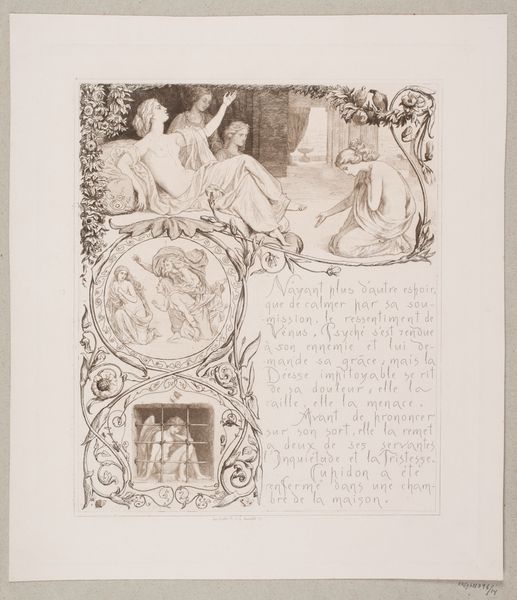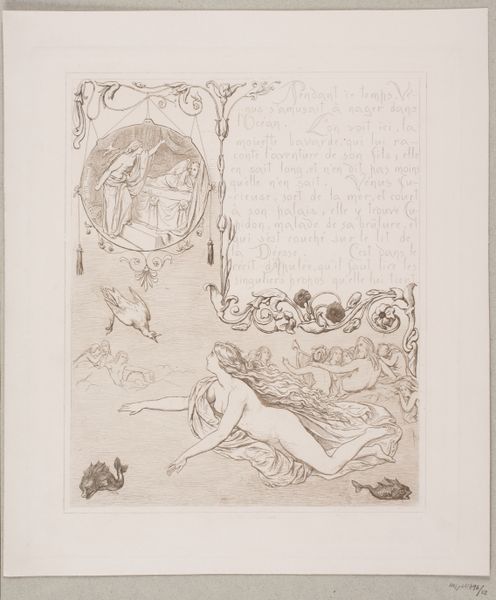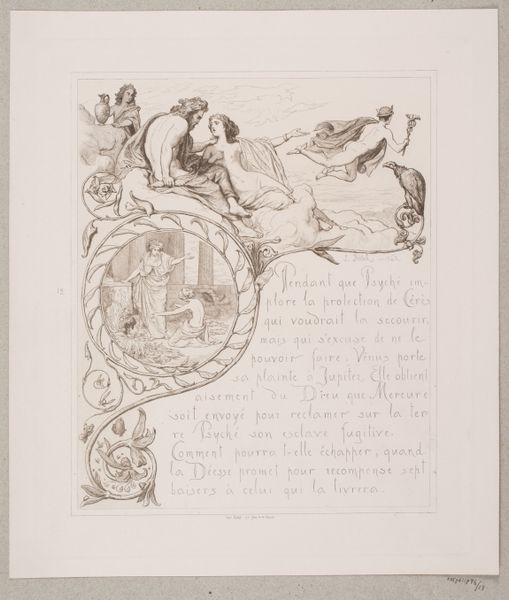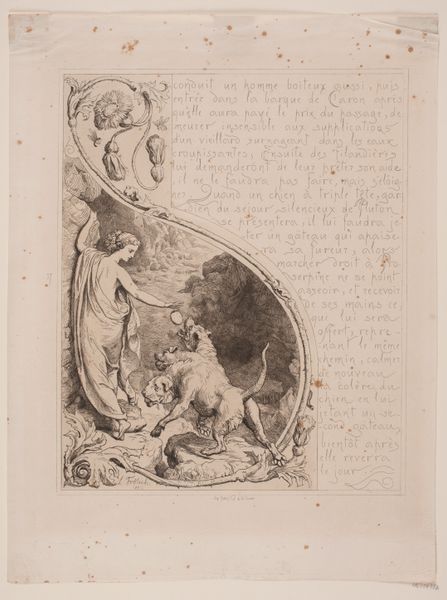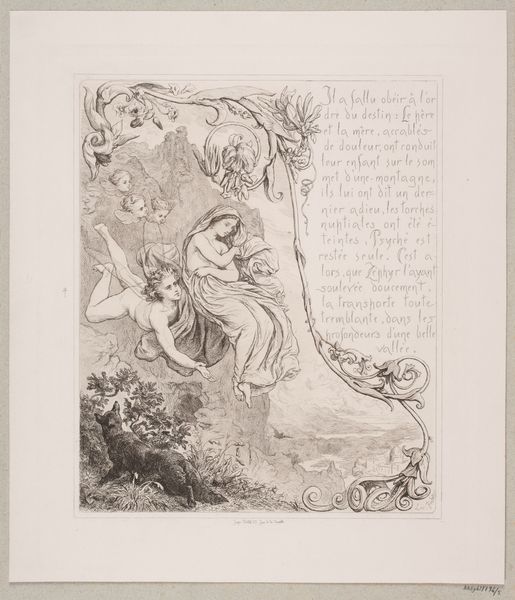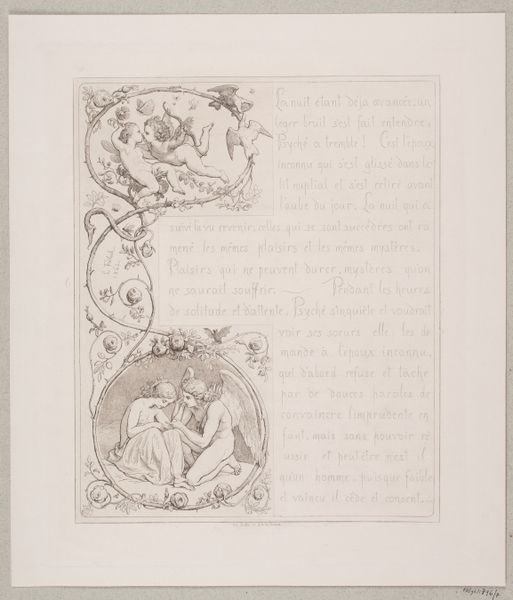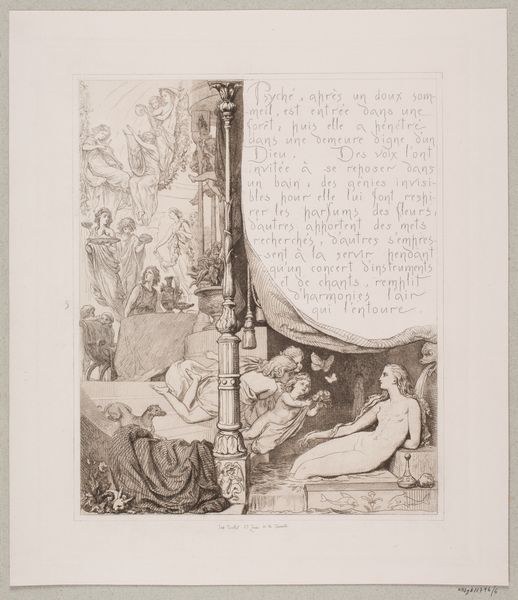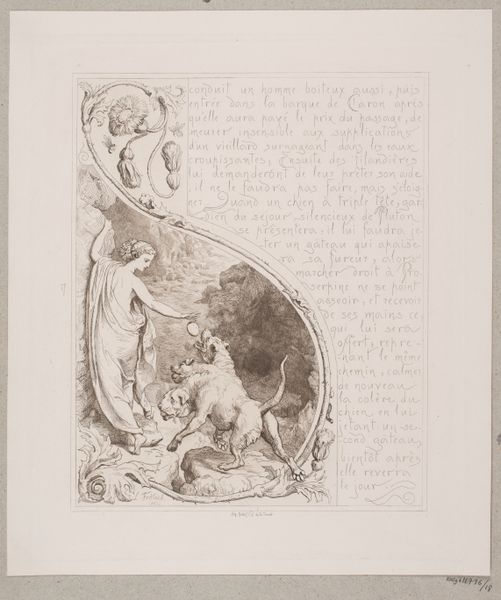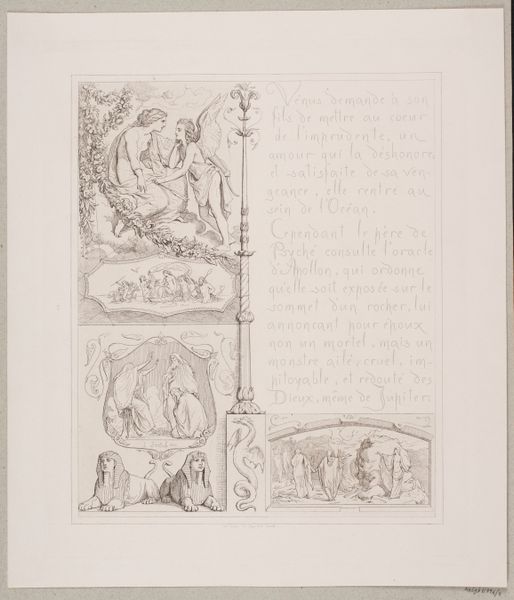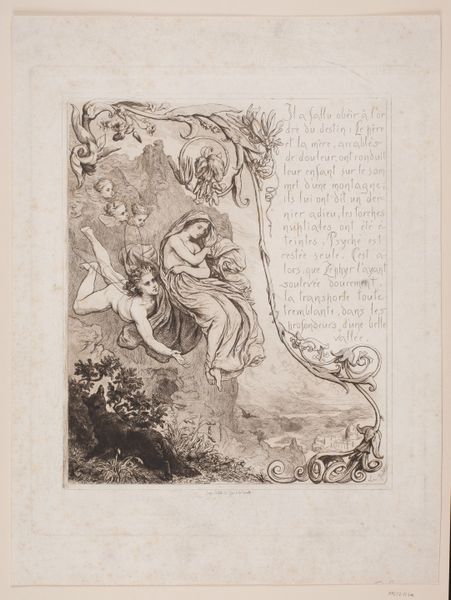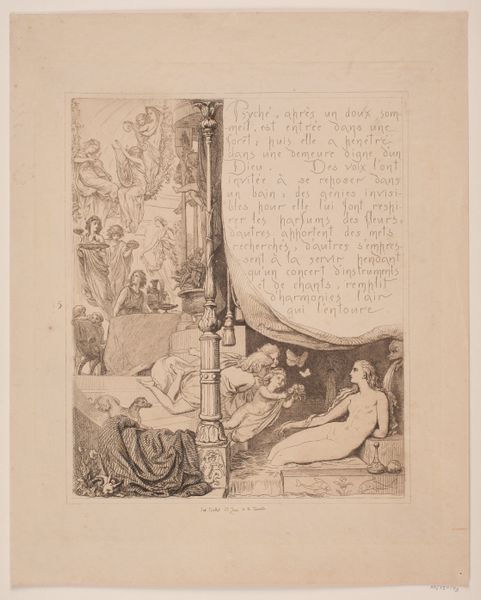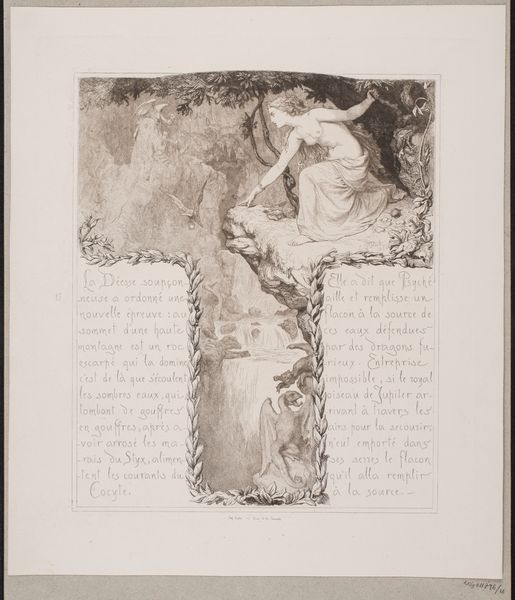
Dimensions: 351 mm (height) x 308 mm (width) (bladmaal)
Curator: Let’s spend a moment with Lorenz Frølich's "Illustration nr. 18 til 'L`Amour et Psyché'," created in 1862. It’s currently housed at the SMK - Statens Museum for Kunst. The artwork depicts a scene rendered through delicate engraving. Editor: It feels melancholic, even funereal. The faint etching of figures enclosed within the decorative oval frame evokes a dreamlike quality, a whisper of a story told long ago. There’s a vulnerability conveyed through the line work. Curator: Frølich, situated within Romanticism, engages with the classical myth of Cupid and Psyche. Notice how the composition embodies the core narrative concerning themes of love, loss, and the difficult journey towards spiritual fulfillment, framed by the societal and personal constraints placed on women at the time. The figures’ pose and the narrative context is highly reminiscent of classical depictions of death and mourning, and invites comparison. Editor: The winged figure leaning over the reclining woman speaks to a powerful archetypal theme: resurrection. That moment when divine intervention awakens something dormant within. Consider how wings have always represented ascension and connection with higher realms, with the touch initiating change and offering protection, hope even, and transcendence over suffering. Curator: I agree that Frølich masterfully uses these symbols. He's reflecting a moment of societal transition; during the 19th Century traditional gender roles were being actively questioned and reimagined, prompting artists like Frølich to visualize these shifts through classical narratives and their allegorical meanings. We must account for the prevailing social expectations regarding love, duty, and sacrifice projected onto women, where Psyche represents both the subjugation and latent power of the feminine spirit within shifting cultural paradigms. Editor: Looking at this piece now, it transcends its immediate context, inviting us to consider the power of visual language. Symbols aren’t just historical relics; they’re active agents that shape and reshape our understanding across time. I mean, how can we deny its cultural weight? Curator: Precisely! It reminds us to question how mythologies serve to negotiate individual freedoms with broader historical dynamics. Editor: A worthwhile provocation indeed, connecting us to the power of narratives!
Comments
No comments
Be the first to comment and join the conversation on the ultimate creative platform.
